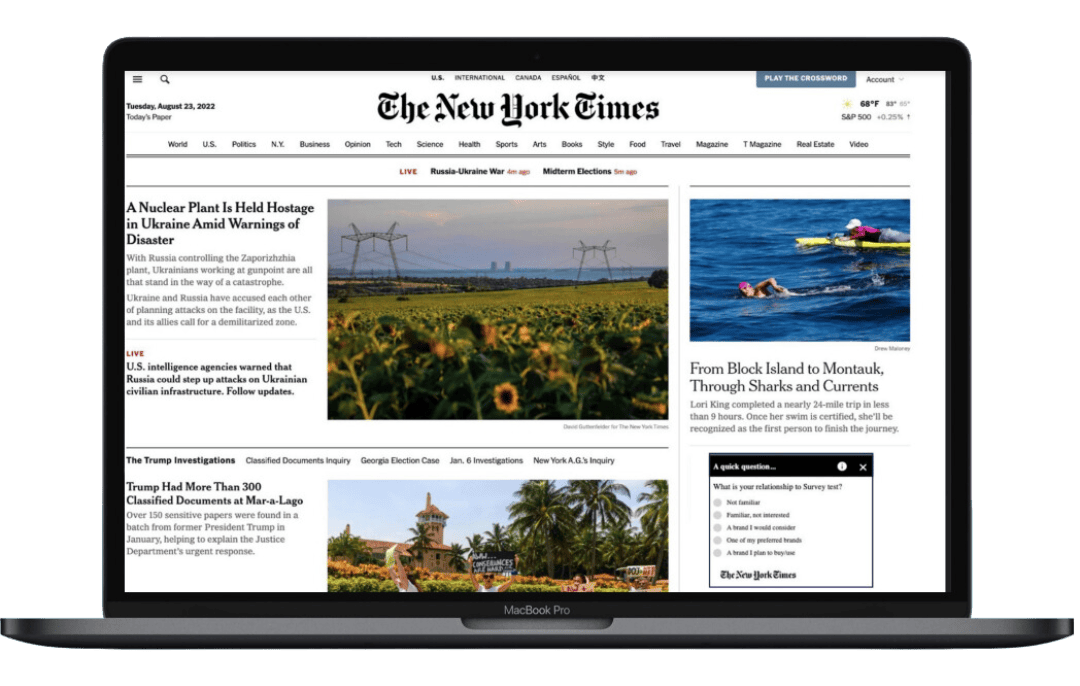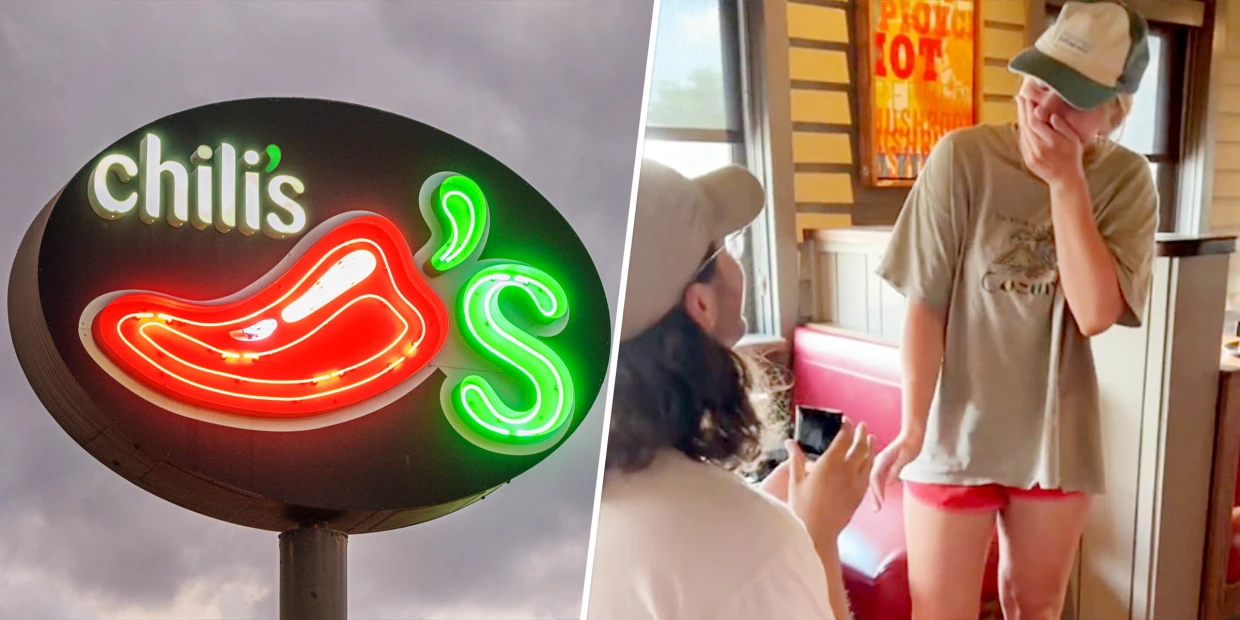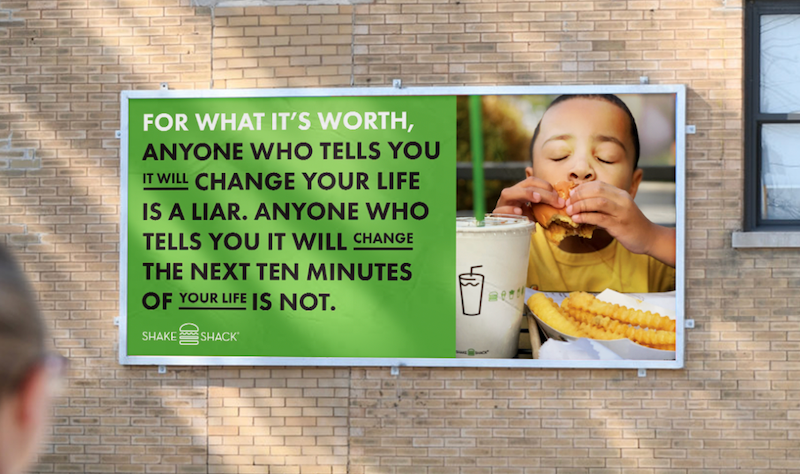Bold Brand Ideas: Annual Planning Season: How to Get Your C-Suite to Approve Creative Ideas
‘Tis the season for annual planning. For some senior marketers, this is an exciting time – an opportunity to build on this year’s momentum and dream up big campaigns. For others, it’s a period of “nos” and budget cuts.
Regardless, this year’s planning has layers of nuance, with a fluctuating economy and presidential election. These macro trends create a level of uncertainty among business leaders, and uncertainty often leads to risk-averse or watered-down strategies.
That’s a mistake.
Economic turmoil often yields winners and losers. The winners are brands that prioritize risk taking and brand building. They invest in creative campaigns to win attention (see #Goals section) and loyalty.
Take Chili’s, for example, which is now seeing blockbuster quarters after years of losing relevance. This relevance and success didn’t happen overnight. It’s a result of YoY marketing strategies rooted in culture and social listening.
In 2023, when a bride’s TikTok showcasing her Chili’s-catered wedding went viral, the brand saw an opportunity to lean into this buzz, quickly launching a campaign to offer free catering to the first three couples who got engaged at their restaurants. Later that year, Chili’s also embraced nostalgia, reintroducing the iconic Baby Back Ribs jingle with Boyz II Men to resonate with millennial customers.
These efforts aren’t just about driving sales but creating moments that get customers talking. It’s no surprise they’re seeing record quarters in 2024.
Chili’s CMO said it best: “We’re trying to drive sales overnight but also brand over time. You have to be doing both of those things at the same time.”
That balance is what creative campaigns are all about.
So how do you get risk-averse leadership to buy in? Bookmark these resources:
- How to Bring the C-Suite Along for a Creative B2B Marketing Campaign
- Why Marketers Are All About Nontraditional Formats Now
- Cashing in on Creativity: How Better Ads Deliver Bigger Profits
- How CMOs Can Gain More Influence in the C-Suite
- How Kraft Heinz’s New CMO Todd Kaplan is Defending Creativity in the Age of Data
Industry Insights: Why Price Isn’t Enough to Win the Value Wars
Speaking of economies in flux…
As fast-food prices (and really, prices everywhere) soar, giants like Wendy’s and McDonald’s are ramping up their value meal offerings to attract budget-conscious customers.
While these value wars were built on price competition, they’re turning into a fight for attention.
A majority of Americans view fast food as a luxury (even with price cuts). They’re more selective than ever with their dining choices. If they’re going to spend money, they expect customization and quality products.
This underscores an important truth: Cost-slashing isn’t a sustainable strategy. Building and then marketing your value-adds (beyond price) are equally important.
Shake Shack’s latest “Worth It” campaign gets that.
The campaign emphasizes its commitment to premium ingredients and culinary craftsmanship to stand out in the fast-casual market. Through slow-motion commercials and visuals across social media, connected TV and New York City billboards, Shake Shack showcases the quality that goes into its iconic menu items, like the ShackBurger.
The campaign aims to reinforce the brand’s value by spotlighting the effort behind each meal, meeting consumer demand for high-quality ingredients even as competitors focus on affordability.

Emphasizing quality isn’t the only way to compete in a value war.
Technomic reported that over 70% of consumers will visit a restaurant that offers new flavors, with two-thirds open to paying more for innovative tastes. This is especially important for Gen Z, the most diverse generation with an affinity for global cuisine.
To drive lines + loyalty among Gen Z, FSRs are racing to create “hot” menu items. These flavors drive “gotta try it now” mentalities and play on customer’s FOMO.
The snacking trend of “little treat culture” combines the power of LTOs and value prices.
Luis Martinez, senior vice president of R&D and Commercialization at Rubix Foods [client], a culinary and food science-focused provider of flavor and functional ingredients, told Modern Restaurant Magazine:
“Now more than ever, consumers are seeking more value menu options. And with the price gap between LSRs and FSRs shrinking, operators have to adapt…Not only is a lower price point important but consumers want to feel like they are getting a good bang for their buck, too. Investing in novelty SKUs that would make existing items more premium (i.e. cold foam, custom-flavored fry toss) would provide a different experience for your consumers and give them something to talk about.”
Whatever the approach, the situation is clear: competing on price alone isn’t sustainable. Other brand and product values must shine through for a lasting impact.
Goals: How to Measure Success in the Attention Economy
A new study by Havas Media Network, Lumen Research and Brand Metrics demonstrates how attention campaigns effectively drive brand outcomes, such as awareness, purchase intent and sales.
The research reveals that attention significantly impacts brand preference and action, with aggregate attention and campaign frequency being key to results.
The takeaway: Short bursts of attention can boost brand awareness, while sustained attention drives purchase action.
Consider these attention types created by ATTN when building your next campaign:
1. Instinctual Attention:
This is the kind of attention that jumps out at you—big, loud and impossible to ignore. It’s triggered by anything flashy or surprising.
2. Emotional Attention:
This happens when you genuinely feel something. It happens when campaigns connect with you on a deeper level, drawing you in.
3. Cognitive Attention:
This kicks in when you’re intrigued or faced with something unexpected. It prompts curiosity, making you think and connect your own dots.
4. Planned Attention:
This type of attention is rooted in responsibility. It’s prompted by campaigns that prompt careful consideration and decision making.
When alone or in short bursts, these attention types increase brand awareness. But when combined and over time, they drive purchase intent.

PR campaigns are strong tools for capturing sustained attention.
But awareness and attention campaigns often fall into the trap of shortism. When they don’t drive immediate sales, c-suite panics.
The best way to reassure leadership is through comprehensive reporting.
Here are a few to consider for your next campaign:
- Targeted media impressions over time: Number of times your brand is seen in target publications month-over-month. All impressions aren’t created equal, so it’s important you’re prioritizing impressions in places your audience pays attention to.
- Share of Voice (SoV): SoV measures your brand’s share of the conversation within your industry relative to competitors. It provides a snapshot of your brand’s visibility and marketplace position, especially when tracked over time. A growing SoV suggests that your PR efforts are successfully capturing attention and establishing the brand as a key player in the industry.
- Follower + Engagement Growth: Look at engagement metrics on social media platforms, including follower growth, likes, shares, comments, and the frequency of those interactions over time. A growing follower count or engagement rate suggests sustained interest and can reflect the campaign’s ongoing influence.
- Referral Traffic and Returning Site Visitors: Measure the traffic PR placements or influencer campaigns drive to your website. Track the actions these visitors take, such as time spent on the page, conversions or repeat visits, which indicates their level of interest and engagement. Metrics like bounce rate and on-page time provide valuable insights into how compelling and relevant the PR message is to your target audience.
What metrics do you measure?
DEI Download: Diversity Isn’t a Trend
This blog is all about the latest insights. But it’s important to distinguish: diversity is not a trend, even if some companies treat it that way.
With brands rolling back their initiatives, we want to re-emphasize our commitment to diversity and inclusion. We strive to amplify voices and actions that drive equity forward. In our content (and IRL!), we’ll continue to share stories of inspiration, learning and guidance.
In that spirit, check out AdWeek’s latest byline by Destiny K. Chambers: The Cost of Cultural Ignorance: How Brands Can Get It Right. Destiny lays out a roadmap for getting marketing right in our multicultural world.





